John’s journey: Overcoming adversity to secure a $500,000 Total Permanent Disability (TPD) claim
John’s Journey: Overcoming adversity to secure a $500k TPD Claim Jump to Result This image does not depict our actual client. John’s story In July
At GMP Law, we have extensive experience in class action lawsuits, amplifying the voices of individuals who have experienced similar harms or losses.
Gerard Malouf & Partners Manage Cases For Clients Across All Areas Of Personal Injury Law, Inheritance Disputes And Superannuation Disputes.
Gerard Malouf & Partners Have Provided Friendly, Experienced Legal Advice To Communities Across Australia For Over 35 Years. Our Personal Injury Lawyers Have Taken On Ten’s Of Thousands Of Cases And We Are Proud To Have Won Billions Of Dollars For Our Clients.
Read Our Latest Articles, Case Studies Or Commonly Asked Questions Concerning Your Legal Claims And Compensation Law.
Our client was in the rental market looking for premises to begin her retirement. Our client attended an inspection but did not have access to the garage.
She arranged another inspection with her husband, signed the lease and began to organise for their belongings to be moved to their new home.
While moving into the premises, she and her husband opened the garage door and proceeded to walk through the garage into the storage area. Suddenly and without warning stepped off and fell down a gap of over 70 cm, handing on concrete and sustaining severe tears to her ligamentous muscles and fractures to multiple toes.
The underground storage had a large 70cm step that was not known to the client nor marked on any inspection brochures. To make matters worse, the area did not have any lighting, nor was our client advised of such a hazard upon entering the premises on the two occasions.
We obtained expert reports from builder certifiers which proved that any entrant in the underground storage area would, in doing so, suffer serious injury due to the large step differential.
Our firm proved that both the owners of the rental property and the letting agent had failed in their duty to ensure that such a foreseeable hazard constituted a risk of harm to an entrant of the property. If they had implemented reasonable measures, our client would have more likely avoided such a horrendous incident and suffered the injuries in the manner sustained.
If you have suffered injuries at a property inspection to the negligence of someone else, contact Gerard Malouf & Partners.
Public liability refers to the responsibilities owners or occupants of a public space have to protect anyone who enters. If the owners or occupants fall short of these responsibilities, resulting in an injury, a case for compensation can be made.
Some of the most common incidents covered by public liability law include:
Following an initial meeting, the first task will be to establish the general facts of the case. This will include your medical diagnosis, which will need to be confirmed and documented by a doctor; and proof that the person or company at fault owed you a duty of care, which will need to be demonstrated. Together, this will show that your injury occurred when they breached that duty of care.
From there a further investigation will proceed—contacting and interviewing witnesses, speaking with expert consultants, and more—all in order to bolster the strength of your case even further. Only once this process is complete, and your claim can be demonstrated and proven in full, will the process move on to the next step.
Public liability claims enable you to recoup the financial and emotional costs of suffering an injury due to someone else’s negligence. Defendants regularly offer monetary settlements to claimants, particularly if they acknowledge liability and believe they would lose in court.
But should you accept the settlement or proceed to the later stages of litigation instead, where a judge will have the final decision? Every case is different, but here are some of the factors you may wish to consider before making your choice:
There are time limits involved with public liability claims, so it’s important to make a claim as soon as possible to ensure you remain eligible. Usually, individuals have three years from the date of injury to file a claim but this may differ by state and it is often best to start the claims process as early as possible.
John’s Journey: Overcoming adversity to secure a $500k TPD Claim Jump to Result This image does not depict our actual client. John’s story In July
Case Overview Our client presented to a vascular surgeon, seeking treatment of her varicose veins in her right leg. Following the surgeon’s recommendation, our client
Case Overview A woman from Green Valley was a passenger in a car when the driver lost control of the vehicle, leading to a collision
Case Overview At the time of her injury, our client was working as a cleaner at a private residence in Kurrajong. During the course of
Case Overview We acted for a client from Western Sydney who was involved in a serious motor vehicle accident. The other driver collided into our
Case Overview We acted for a client from Coffs Harbour who was involved in a serious motor vehicle accident. The driver failed to give way






Your location is currently:
Please wait while you are redirected to the right page...